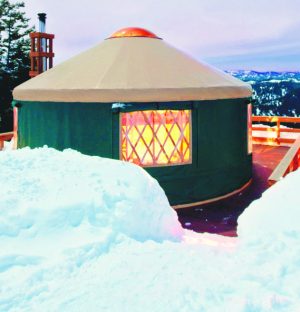In April, strength makes up a solid chunk of my training volume. First off, the April training load is lower than the rest of the year. And two, I’m not worried about heavy legs or tired arms affecting my now non-existent specific ski training period. I get into the gym three to four times a week for all-around general strength work.
For one month a year I don’t follow a specific strength plan in the gym. Instead, it’s a little more freeform. My guide is remembering the little conversations I had with myself during the past season. Like, “Oh man, I have the horsepower for a top-end double-pole finish, but the chain from my upper core to my lower body is a little weak. Best to address this early on in next season’s preparation.” And now that the training season for 2012 is upon us, it’s time to act on these thoughts and impressions.
Skiers go into the weight room to turn strength into power, and as the big races approach, to turn this into ski-specific power. As the big races of the season loom ahead, work in the weight room gets more ski specific, and strength drills on skis take on a greater preference.
May, though, is not the time to place the emphasis on such priorities. In May it’s about addressing any lingering physical ailments you might have built up from so much repetitive movements, done over and over, day after day. Spring’s the time to recover. It’s also the time to make sure that the aggravating tendonitis in the elbow or Achilles is a thing of the past.
Once a week, I focus for two hours only on basic physical therapy inspired drills so I don’t spend at least this much time nursing along ailments through the meat-and-potatoes of the race season.
May is also the time to build the foundation of strength. To do this, I focus on four core lifts. Twice a week I head to the gym and do these four lifts as the bulk of my weight room session. More specifically, I do these three-to-four sets of each of these lifts, with twelve-to-fifteen reps a time.
It’s a time for me to get back in touch with proper lifting techniques. To help me with this, I will enlist at least once the helpful eyes of an outsider. I may think I’m lifting from the hips, and keeping my weight back on the heels in my full squats, but sometimes perception has a way in getting in the way of reality. This is where the second pair of eyes from a video camera or your lifting partner comes in handy.
But what to focus on, you ask? Well, I asked the same questions to Zach Wetterford, US Olympic Training Center Lifting Coach (and former US Ski Team Lifting Coach) to get the skinny from someone who thinks about cleans, squats, plyometrics and strength-based plyometrics every day of the week. Here’s the technique pointers Zach has for the “Wetterford Four.”
Dead Lift into Clean
Key Points:– Remember this is very explosive movement utilizing the hips, legs, back and shoulders.
– Keep the back tight and flat throughout the lift.
– The bar’s trajectory should move only in a vertical plane. Don’t swing it out and around; rather jump it straight up.
Squat
Key Points:– Look straight ahead, keeping one’s head and chest up – this aligns the spine, protecting it from injury.
– Keep weight equally distributed between both feet.
– Push through one’s feet. Don’t get up on your toes!
Pull Down
Key Points:– Maintain upper body in upright position, with a slight backward lean from the hips.
– Avoid jerky movements
– Keep shoulders down to stabilize scapula and isolate the lats.
Press
Four Lifts – all Coach Weatherford approved. Just remember to Keep it Simple. Get a coach to get the technique down. Emphasize multi-joint movements. Don’t substitute strength for sport training.






![National camp action [P]...](https://skitrax.com/wp-content/uploads/2019/08/Duluth-4-2019-08-08-at-10.46.51-AM-300x246.png)
![Matt Liebsch on the CXC Elite Team [P] CXC...](https://skitrax.com/wp-content/uploads/2019/08/Matt-Liebsch-CXC.2-525x700.4-300x267.jpg)
![Dan LaBlanc [P]...](https://skitrax.com/wp-content/uploads/2019/08/Dan-LaBlanc-img_1855.3.jpg)

![Strength training is an important part of your overall regime. [P] Torin Koos](http://skitrax.com/wp-content/uploads/2011/05/Press-3-200x150.jpg)
![Dead lift into clean. [P] Torin Koos](http://skitrax.com/wp-content/uploads/2011/05/Lift.jpg)
![Squat [P] Torin Koos](http://skitrax.com/wp-content/uploads/2011/05/Squat.jpg)
![Pull Down [P] Torin Koos](http://skitrax.com/wp-content/uploads/2011/05/Pull.jpg)
![Press [P] Torin Koos](http://skitrax.com/wp-content/uploads/2011/05/Press.jpg)